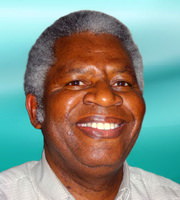
by Joanna Fishman
Obsessive compulsive disorder, or simply “OCD”, is a condition that pairs obsessive thought patterns with compulsive behaviours. These thoughts and behaviours cause the sufferer depression and anxiety. Some typical examples of the behaviour you might see in someone with OCD is constantly cleaning (beyond reason) or counting items over and over again.
There are two distinct elements to OCD: obsessions and compulsions. The obsessions are not as easy to identify (to the outside world) as the compulsions. Someone may have obsessive thoughts about items being symmetrical, for example, but this behaviour manifests itself in compulsive organizing and rearranging of items.
The causes of OCD are up for debate. There is strong evidence to suggest that the brain activity of the OCD sufferer is markedly different from that of those who do not suffer from OCD – suggesting a biological basis for the condition. Specific neurotransmitters may be key to understanding these biological anomalies. Neurotransmitters send messages between nerve cells within the brain. OCD sufferers are thought to have lower levels of serotonin than the general population.
Unfortunately, having a parent with OCD may increase the likelihood of you being diagnosed with the same. While this seems to suggest a genetic link, studies have not been conclusive. The prevalence of OCD in families is likely a combination of both nature and nurture.
Interestingly, some experts link certain infections with the onset of OCD symptoms. Some children are diagnosed with OCD within weeks after suffering from strep throat. This is due to the infection damaging the nerve cells within the brain that control OCD.
Treatment for OCD usually comes in the form of medication and/or psychotherapy. Medication does not cure the disorder – it merely makes it tolerable. Psychotherapy, on the other hand, can provide a lasting and even permanent solution to OCD symptoms.
Cognitive Behavioural Therapy (CBT) is a very popular treatment option for sufferers of OCD. CBT involves intervening negative or destructive thought patterns and replacing them with more rational thoughts. Some CBT therapists use exposure and response prevention, which teaches the sufferer how to cope with their anxiety toward a specific trigger by exposing them to the trigger gradually.
While counselling is one of the most effective non-pharmaceutical treatments for OCD, there are other types of natural remedies that sufferers may try in conjunction with psychotherapy. Yoga can be used to treat a variety of medical ailments – but it is specifically beneficial for anxiety (which commonly accompanies OCD). Some patients also find St. John’s Wort (found in health food stores) effective in alleviating depression, which may be present in OCD sufferers.
OCD can be crippling for sufferers, as it causes high levels of anxiety and depression. It can affect the sufferer’s ability to hold down a job, enjoy social situations or attend school. However, OCD need not be a life sentence. There are many effective treatments for OCD ease short-term and long term suffering. The first step is always to see a counsellor and get a proper diagnosis.
Image Credit: Nwardez


















